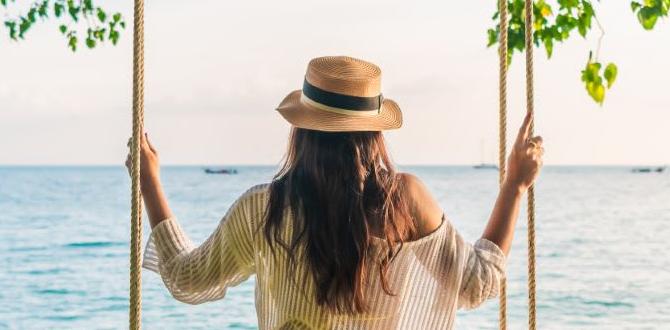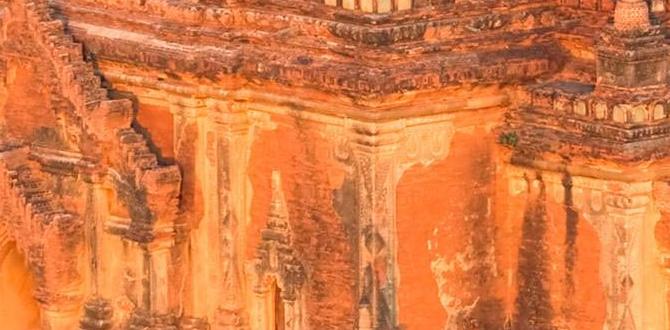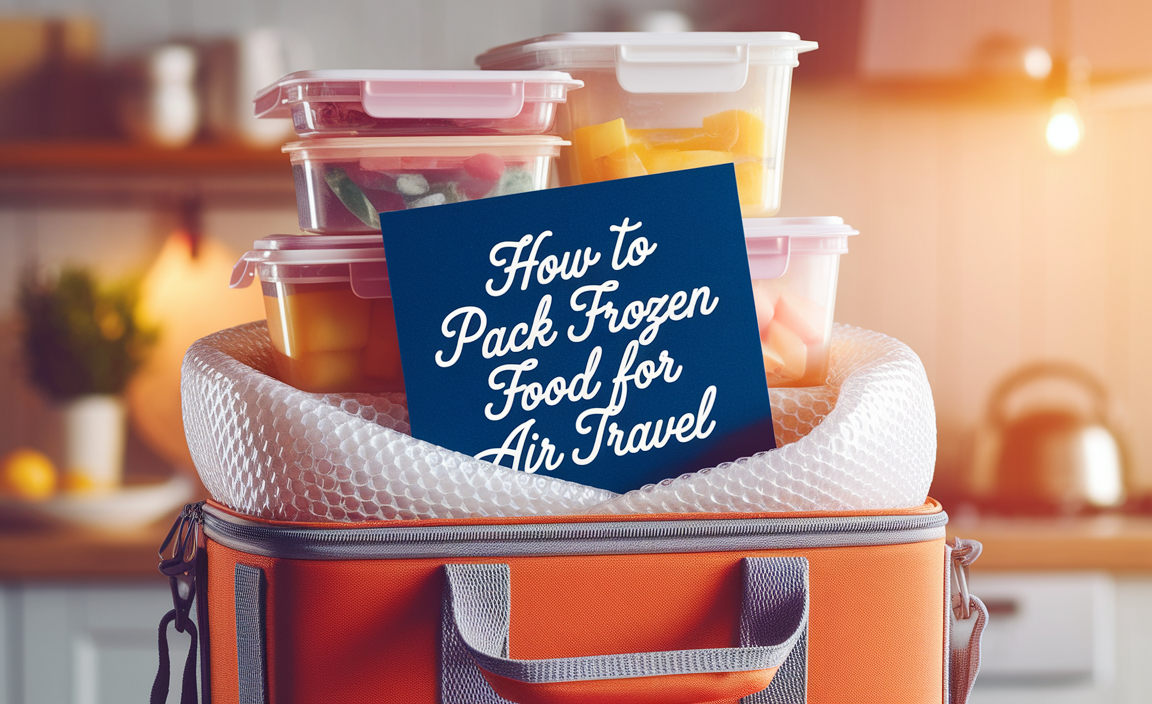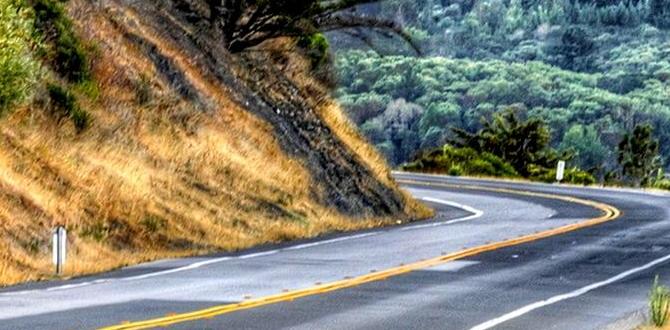Baja California First-Timers Guide: Essential Tips for a Stress-Free Adventure
Planning your first trip to Baja California? This guide offers essential tips for a smooth and enjoyable experience. From packing smart to navigating local customs, we’ve got you covered for a memorable adventure. Discover key advice to ensure comfort and ease for solo travelers, families, and those seeking easy-to-manage travel solutions.
Baja California calls to travelers with its vast deserts, stunning coastlines, and vibrant culture. Yet, for first-timers, the sheer expanse and variety can feel a little overwhelming. You might wonder about the best places to visit, what to pack, or even how to handle everyday needs while on the road. Don’t let planning worries dim your excitement! This guide is designed to simplify everything, offering clear, practical advice so you can focus on soaking in the magic of Baja. We’ll share tried-and-true tips to make your inaugural visit just as comfortable and exciting as you’ve dreamed.
What to Expect: Your Baja California First-Timer’s Overview
Baja California is Mexico’s longest and thinnest state, stretching dramatically down a peninsula between the Pacific Ocean and the Gulf of California. It’s a land of incredible contrasts, from the arid, rugged beauty of its interior deserts to the turquoise waters and white-sand beaches along its coasts. For first-time visitors, it’s a destination that promises adventure, relaxation, and unique culinary experiences without the overwhelming crowds that can flock to other Mexican resorts.
The region is broadly divided into Baja California Norte (North) and Baja California Sur (South). Baja California Norte is known for its wine country near Ensenada, Tijuana’s bustling border crossing, and surf spots like Rosarito. Baja California Sur offers the world-famous resorts of Los Cabos, the charming artist colony of Todos Santos, and the tranquil whale-watching haven of Guerrero Negro. Understanding this geographical diversity helps in planning where to start your exploration.
The allure of Baja California lies in its accessibility from the US, its stunning natural landscapes, and its rich cultural tapestry. You’ll find charming small towns, bustling cities, and remote natural wonders. The driving is generally straightforward, though distances can be long, and services can be sparse in some remote areas. Knowing what to expect, from the weather to local customs, is key to a seamless journey. Pack accordingly, stay informed, and prepare for an unforgettable experience.
Getting Ready: Packing Essentials for Baja California
Packing for Baja California depends heavily on where you’re going and what you plan to do. However, some essentials are universally useful for travelers. Comfort and practicality are key, especially if you plan on exploring diverse terrains or have specific personal care needs.
Clothing: Layers are Your Best Friend
The weather can vary significantly, even within the same day. Coastal areas are generally mild, while desert interiors can get very hot during the day and cool down considerably at night.
- Lightweight, breathable clothing: Cotton or moisture-wicking fabrics are ideal for daytime. Think t-shirts, shorts, and comfortable trousers.
- Long-sleeved shirts and trousers: Essential for sun protection in the desert and cooler evenings. They also offer protection against mosquitoes.
- A light jacket or fleece: For cooler nights or air-conditioned interiors.
- Swimwear: A must-have for the beautiful beaches and resort pools.
- A hat: Wide-brimmed hats are excellent for sun protection.
- Comfortable walking shoes/sandals: You’ll likely do a lot of exploring on foot.
- Water shoes: Useful for rocky beaches or water activities.
Sun Protection: Your Non-Negotiables
The sun in Baja California is intense. Prioritizing sun protection is crucial for a comfortable trip.
- High SPF sunscreen: Broad-spectrum protection is best.
- After-sun lotion: To soothe skin if you do get too much sun.
- Lip balm with SPF: Lips can easily burn.
- Sunglasses: Protect your eyes from the glare.
Personal Care and Comfort Items
For a stress-free journey, especially for those who require additional personal care items, being prepared is paramount.
- Essential toiletries: Pack travel-sized versions of your usual items.
- Hand sanitizer: Always handy for on-the-go cleanliness.
- Insect repellent: Especially important for evenings or areas near water.
- Any personal medical items: Including prescriptions and over-the-counter remedies.
- Adult and Child Diapers: For peace of mind on long travel days or in case of unexpected needs. Having trusted brands like Depend or similar for adults, and reliable child diapers like Pampers Swaddlers or Huggies Little Snugglers specifically designed for comfort and absorbency, can make a huge difference. Consider packing more than you think you’ll need, as availability might be limited outside major towns. Discreet personal care items ensure you can focus on enjoying your trip without worry.
Tech and Documents
- Phone and portable charger: For navigation, communication, and photos.
- Camera: To capture the stunning scenery.
- Travel adapter: Mexico uses Type A and Type B plugs, the same as the US and Canada.
- Important documents: Passport, driver’s license, insurance information, and any booking confirmations. Keep digital copies as well.
Navigating Baja California: Transportation and Getting Around
Deciding how to get around Baja California is one of the first big planning steps. The best option for you will depend on your itinerary, budget, and sense of adventure.
Driving Your Own Vehicle
Many visitors choose to drive their own car or RV. This offers the most flexibility and allows you to explore off-the-beaten-path locations.
- Pros: Ultimate freedom, can carry more luggage, comfortable with personal items.
- Cons: Mexican auto insurance is mandatory and can be purchased online or at the border. Roads can be narrow and winding, especially away from major highways. Be mindful of local driving habits.
If you plan to drive extensively, ensure your vehicle is in good condition and consider investing in a GPS or reliable navigation app. Familiarize yourself with Mexican auto insurance requirements before you travel.
Rental Cars
Renting a car is a popular choice, offering a balance of convenience and independence.
- Pros: Readily available at airports, ability to explore at your own pace.
- Cons: Can be expensive, especially with insurance and fees. Make sure to inspect the vehicle thoroughly for pre-existing damage and understand the fuel policies.
Book your rental car in advance, especially during peak seasons, and compare prices from different companies. Always opt for full insurance coverage.
Buses
For budget-conscious travelers or those sticking to major routes, the bus system is efficient and comfortable.
- Pros: Affordable, safe, and reliable. Major companies like ABC and Greyhound operate extensive routes connecting most major towns and cities.
- Cons: Less flexibility, limited to established routes, may take longer than driving.
Bus stations are generally located in the center of towns, making it easy to get to your accommodation once you arrive. Look for first-class services for the most comfortable rides.
Taxis and Ride-Sharing
Taxis are abundant in cities and tourist areas. Ride-sharing services like Uber and Didi are available in larger cities like Tijuana and Cabo San Lucas.
- Pros: Convenient for short trips within towns.
- Cons: Can be expensive for longer distances. Negotiate taxi fares before your ride or ensure the meter is used.
For longer journeys between cities, buses or driving are generally more economical and practical.
Top Destinations for First-Timers
Baja California offers a diverse range of experiences. Here are some of the most popular spots perfect for a first visit.
Ensenada
Known as the “Cinderella of the Pacific,” Ensenada is a vibrant port city famous for its seafood, wine region (Valle de Guadalupe), and lively atmosphere.
- Must-Do: Explore La Bufadora, a marine geyser. Enjoy fresh seafood at the Hussong’s Cantina or the Malecon.
- Best for: Foodies, wine lovers, and those looking for a lively coastal city experience.
Valle de Guadalupe
Just a short drive from Ensenada, this is Mexico’s premier wine region, producing a surprising number of award-winning wines.
- Must-Do: Wine tasting at various vineyards, enjoying farm-to-table dining.
- Best for: Wine enthusiasts, gourmet travelers, and scenic drives.
Rosarito
A popular beach town with a relaxed vibe, Rosarito is renowned for its beautiful beaches and surfing.
- Must-Do: Relax on the beach, try sport fishing, enjoy the local nightlife.
- Best for: Beach lovers, surfers, and families.
Todos Santos
This charming artsy town on the Pacific coast is a designated “Pueblo Mágico” (Magic Town). It offers a bohemian atmosphere, art galleries, boutique hotels, and stunning sunsets.
- Must-Do: Visit the Hotel California. Explore the art galleries. Watch the surfers at Cerritos Beach (nearby).
- Best for: Art lovers, surfers, and those seeking a laid-back, sophisticated vibe.
Cabo San Lucas & San Jose del Cabo (Los Cabos)
The “two Cabos” offer distinct experiences. Cabo San Lucas is known for its vibrant nightlife, luxury resorts, and iconic Arch. San Jose del Cabo is more tranquil, with historic charm and a burgeoning art scene.
- Must-Do: Boat tour to El Arco (The Arch). Whale watching (seasonal). Enjoy water sports.
- Best for: Luxury travelers, honeymooners, families, and those seeking world-class amenities.
Loreto
A historic gem on the Sea of Cortez, Loreto boasts a beautiful mission, pristine islands for kayaking and snorkeling, and a peaceful atmosphere.
- Must-Do: Kayak or take a boat trip to Isla Coronado. Visit the Mission of Our Lady of Loreto.
- Best for: Nature lovers, history buffs, and those seeking tranquility.
For more detailed information on destinations and what they offer, the Mexico Tourism Board is an excellent resource.
Foodie Adventures in Baja California
Baja California is a culinary paradise, especially renowned for its incredible seafood. Don’t leave without trying these local specialties.
Baja Fish Tacos
The undisputed king of Baja street food. These tacos feature battered and fried white fish, served in warm corn tortillas and typically topped with shredded cabbage, salsa, and a creamy white sauce.
Where to find them: Everywhere! From roadside stands to upscale restaurants. Look for local favorites like Mariscos El Compita in Ensenada.
Fresh Seafood
Given its extensive coastline, Baja offers an unbelievable array of incredibly fresh seafood.
- Ceviche: Raw fish cured in lime juice with onions, tomatoes, and cilantro.
- Aguachile: Similar to ceviche but with a spicier, lime-based marinade.
- Grilled fish and shrimp: Simple, fresh, and delicious.
Clamato and Micheladas
A popular refreshing drink. Clamato is a savory mixture of tomato juice and clam broth. A Michelada is a beer cocktail often mixed with Clamato, lime juice, and spices.
Dates
Known for its date farms, especially in the southern parts of the peninsula, Baja offers delicious and unique date varieties.
Culinary Tip:
Don’t be afraid to try street food, but use your best judgment regarding hygiene. Look for stands with high turnover and where food is cooked fresh.
Tips for a Comfortable and Safe Trip
Your comfort and safety are paramount for any travel experience. Baja California is generally safe for tourists, but like any destination, it’s wise to be prepared.
Stay Hydrated
The climate can be hot and dry, especially in desert areas. Always carry water and drink plenty. Bottled water is readily available and recommended for drinking and brushing teeth to avoid stomach issues.
Currency and Payments
The local currency is the Mexican Peso (MXN). While some tourist areas accept US dollars, it’s best to use pesos for better exchange rates.
- ATMs: Widely available in towns and cities.
- Credit Cards: Accepted in most hotels, restaurants, and larger stores.
- Cash: Essential for smaller vendors, street food, and tips.
Inform your bank about your travel plans to avoid issues with your cards.
Language
Spanish is the official language. While English is spoken in many tourist areas, knowing a few basic Spanish phrases will be greatly appreciated and can enhance your interactions.
- Hello: Hola
- Thank you: Gracias
- Please: Por favor
- Excuse me: Disculpe
- Do you speak English?: ¿Habla inglés?
Safety Precautions
- Be aware of your surroundings: Especially in crowded areas or at night.
- Keep valuables secure: Use hotel safes and avoid displaying expensive jewelry or electronics.
- Stick to main roads: Especially when driving at night.
- Trust your instincts: If a situation feels uncomfortable, remove yourself from it.
- Emergency Numbers: The general emergency number in Mexico is 911.
Personal Care on the Go
For travelers who might need them, carrying discreet and reliable personal care items can significantly reduce travel anxieties. Adult diapers and child diapers are readily available in larger supermarkets and pharmacies in major towns, but packing a small supply for immediate use or for remote excursions is a sensible strategy. Brands offering good absorbency and a comfortable fit, like those designed for active lifestyles or overnight protection, can ensure you feel secure and confident throughout your day, whether you’re exploring ancient missions or enjoying a long road trip. This foresight allows you to fully immerse yourself in the adventure, knowing your comfort needs are met.
Driving Safely
If you are driving, be aware of speed limits, road conditions, and local driving styles. Avoid driving at night whenever possible, as conditions can be unpredictable and animals may be on the road. Always have plenty of gas, as stations can be far apart in some regions.
Respect Local Culture
Mexicans are generally very friendly and hospitable. Learning a few Spanish phrases, dressing respectfully when visiting religious sites, and being polite will go a long way in building positive interactions.
| Tip | Why It’s Important | When to Use |
|---|---|---|
| Carry Bottled Water | Prevents dehydration and potential stomach upset from tap water. | Always, especially in desert areas and during the day. |
| Learn Basic Spanish Phrases | Enhances interactions and shows respect for local culture. | When speaking with locals, ordering food, asking for directions. |
| Secure Valuables | Minimizes risk of theft. | When in crowded places, at the beach, or in your hotel room. |
| Have Cash (Pesos) on Hand | Essential for small purchases, tips, and places
|





